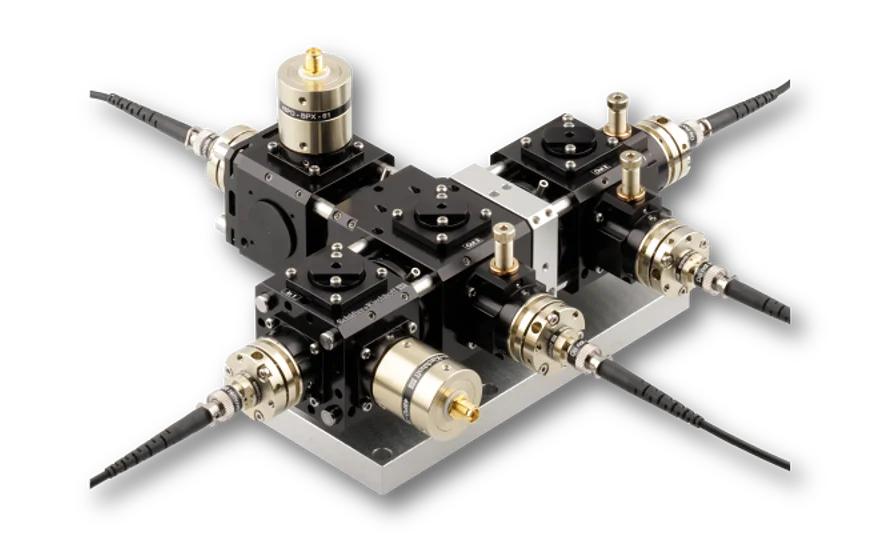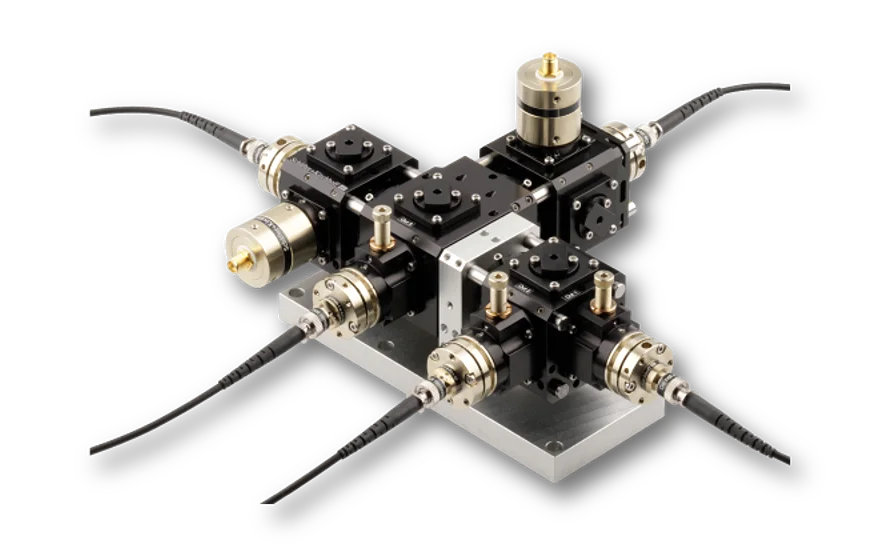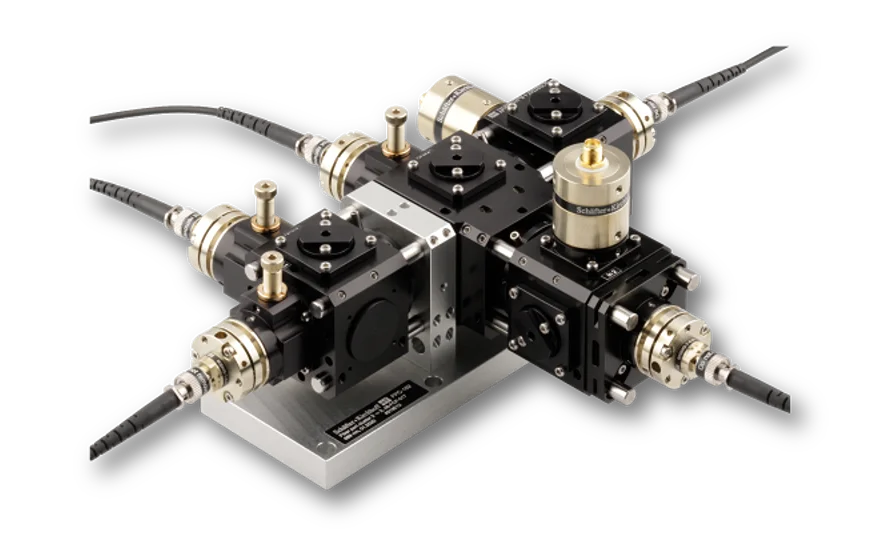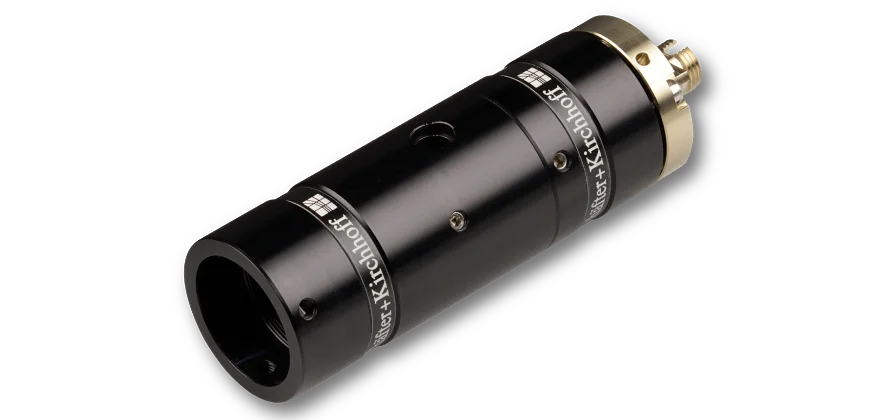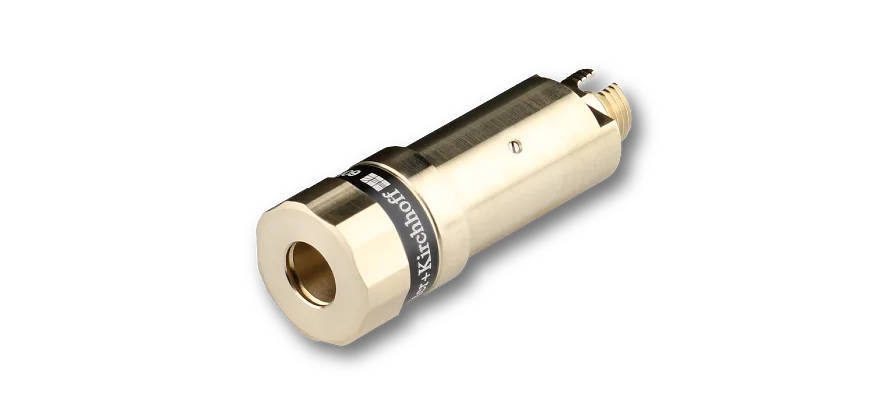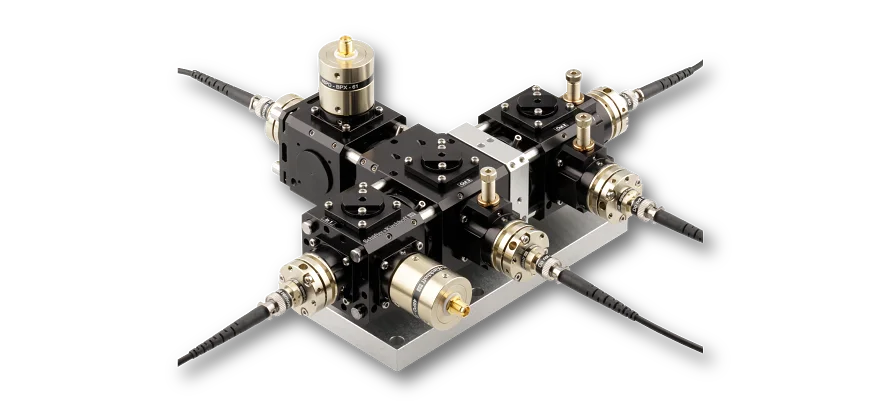This Fiber Port Clusters 2 ⇾ 3 is a compact opto-mechanical unit that combines two fiber-coupled sources with same wavelengths and then splits the combined radiation into 3 output fiber cables with high efficiency and variable splitting ratio.
Optical Setup
The two input ports are fiber-coupled to PM fiber cables. Polarizers define the input polarization which is necessary for a long term stable splitting ratio.
Two photo diodes right after each input port allow for a continuous monitoring of the radiation. The two input sources are superimposed by means of a polarization beam splitter.
Subsequently, the radiation splitting is achieved by using a cascade of rotary half-wave plates in combination with polarization beam splitters. By use of the rotary half-wave plates, almost any desired splitting ratio can be achieved, see the tech note FiberPortCluster_2-6_Balancing.pdf for the limitations.
At the output ports further polarizers are placed in order to define the polarization at output of the system.
An additional attenuator at each output port allows for a fine-balancing.
Please note that, at output three, the two input sources are superimposed with normal state of polarization.
As an alternative, there is the Fiber Port Cluster type 48-FPC-2-3_n with additional polarizer rotated by 45°, which transforms the two states into parallel.
Fiber Couplers
A fundamental component of a Fiber Port Cluster is the Laser Beam Coupler, which is the input into the opto-mechanical unit collimating the input radiation and, finally, couples the radiation back into the polarization-maintaining fiber cables. The stability of the total Fiber Port Cluster is determined by the stability of the laser beam coupler.
How to order
For a detailed quotation please additionally specify
- Wavelength
- Cable lengths
- Connector types
